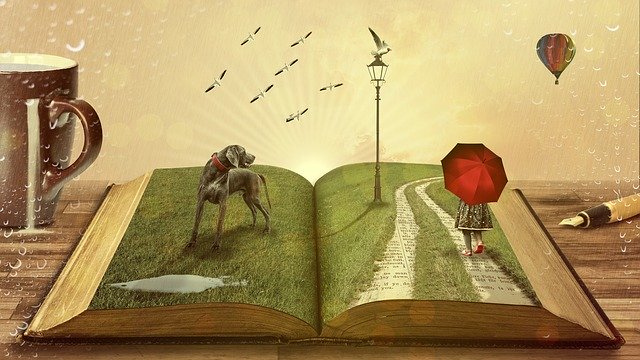
NORA EPHRON ONCE wrote, “Reading is escape, and the opposite of escape; it’s a way to make contact with reality after a day of making things up, and it’s a way of making contact with someone else’s imagination after a day that’s all too real.”
“A day that’s all too real.” I’m sure this is a feeling that we’re all familiar with at this point. When 2020 rolled in, it was full of potential and promise. It wasn’t just a new year; it was an entirely new decade. For a lot of people, myself included, 2020 was supposed to be a year of lasting and positive change. This year I was finally going to get my sh&t together. At least that was the original plan.
Obviously, plans fell through. Nowadays, it’s less getting my sh&t together and more just trying to keep everything from falling apart. Like other anxiety-ridden folks, guilt, overwhelm, and mild panic have become my constant companions this quarantine. And I don’t know about you, but aside from being exhausted 24/7, I find it difficult to focus on anything these days. My writing’s hit an all-time s-low and even my reading comprehension has been affected. Being constantly on edge makes it difficult to find moments of flow, relaxation, and joy.
Thank God for Children’s Books.
I never fully appreciated the beauty and complexity of children’s literature until this quarantine. Now, don’t get me wrong, I’ve always been a fan of the genre. In fact, some of my favorite books are children’s books—A Wrinkle in Time, Harriet the Spy, The Giver, Jonathan Livingston Seagull, To Kill a Mockingbird, Little Women, The Little Princess, Black Beauty, and the list just goes on.
In fifth grade, I was especially obsessed with a particular female detective series. And no, it wasn’t Nancy Drew. (Come to think of it, I don’t think I’ve ever read a Nancy Drew.) It was Margaret Sutton’s Judy Bolton Mystery Series! I spent the entire year just devouring those 38 books. They were those heavy, clothbound hardbacks with glossy jackets depicting an auburn-haired young woman dressed in gorgeous shirtdresses and camel coats.
I loved everything about those books—the stories, absolutely. The artwork, yes. But I also loved that old book smell, the yellowed pages, the thick, coarse paper, and the large typeface. I’m not 100 percent sure, but I think the font used in those books were mostly Bembo—very easy on the eyes. They were just all-around really solid books.
So, I guess I did read and enjoy a fair number of children’s books growing up. But there’s something different about reading children’s books as an adult. When you read your childhood favorites 20 or 30 years down the road, if you’re lucky, you’ll find a wealth of new meanings, a fresh understanding and appreciation of the text. The words themselves haven’t changed, but the context has—you have.
Suddenly, Shel Silverstein’s The Giving Tree has gone from sweet story of a generous tree to something that gives you a soul-deep ache. In my case, revisiting the book after almost 30 years had me crying in bed at 4 a.m. and wanting to see my parents. So, you see, beyond acting as an easy respite from the harsh reality of this pandemic, reading children’s literature can also help you zone in on what’s important in life—family, friends, and the good path.
Most of these books also come with a moral lesson or two, and I think that’s a good thing. Some people don’t like the didactic nature of children’s books, I love it. You want to know how to be a good person, read a children’s book. Sometimes it’s as simple as that.
Now, I just finished reading C.S. Lewis’s The Lion, the Witch and the Wardrobe for the first time and it was exactly the kind of magic I needed. It reminded me to face each day with courage, integrity, honesty, compassion, and dignity—pretty good perspective to have during a pandemic.

One thought on “The Great Escape: On Reading Children’s Books”